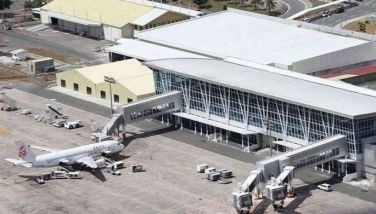Melbourne’s CityLink: A toll tale
March 12, 2004 | 12:00am
48 and 285. These numbers help me find my way around Melbourne. The first is the tram service between the central business district and suburban North Balwyn, where a friend lives; the second is the bus service between her place and the nearest mall. Within the CBD, the maroon City Circle vintage trams ferry commuters, for free.
Its reliable transport system is one of the key factors in Melbourne’s high livability quotient. Its trams, for example, which have been streamlined and redesigned twice over the last eight years, are acknowledged to be among the most efficient in the world.
At the start of the new millennium, Australia’s second largest city and former national capital inaugurated a breakthrough road infrastructure project which has further improved the quality of life in the metropolis. It interconnected the three major freeways ending at the gates of the city, so that motorists could travel across Greater Melbourne without having to squeeze through the congested streets of the CBD.
Melbourne’s 22-kilometer CityLink, which connects the Tullamarine, West Gate and Monash freeways, is considered an international landmark in road construction, pushing the envelope in engineering, information technology, electronics, management, legal and business capabilities as well as government-private sector partnerships.
Specifically, it boasts of the world’s only fully electronic tolling system operating in an inner city setting, with more than 10 entry and exit points. This system enables vehicles to be tolled without having to stop or even slow down – thanks to software that does the following:
• Records every vehicle that passes each toll point, including its size, type and trajectory;
• Senses whether it has an e-TAG, an electronic ID for vehicles using the tollway regularly;
• Determines the toll zones it has crossed; and
• Computes the toll and transmits the amount to the vehicle owner’s account for billing.
If the vehicle has no e-TAG, the license number is checked against CityLink passes issued that day. If the vehicle doesn’t have a pre-paid pass, the system remembers the license number so that a bill is later sent to the address of the vehicle’s registered owner.
The electronic system accomplishes all this within a span of about 1/25 of a second, or faster than you could swipe your credit card. Vehicles simply continue traveling at freeway speeds.
The system was designed to handle up to one million vehicles a day, or 400,000 more than the actual average. No other system in the world can cope with multiple lanes of traffic at freeway speeds. The closest model is a highway in Canada handling half of CityLink’s traffic.
Why an electronic system? Because no other type could meet the Victoria state government’s requirement that it must not impede the free flow of traffic. The goal was to reduce travel times as well as pollution caused by stop-and-go driving in heavy traffic. With conventional toll plazas, vehicles would have to slow down and stop while drivers paid.
CityLink’s story of world firsts is told in Journey and Arrival, a book published by the Victoria Division of Engineers Australia, which envisioned it to be a valuable reference in road infrastructure. The book is written by Emilia Tagaza, a Filipino immigrant (who must have recalled her own road tales of woe, coming from one of the world’s most traffic-plagued metropolitan areas).
The electronic tolling and traffic management system is designed and implemented by Translink Systems, a joint venture between Transfield and Transroute, a French company. The roadside tolling equipment was supplied by Combitech Traffic Systems, which had built single-lane structures elsewhere in the world and was venturing into multi-lane operations for the first time.
Different technologies are at work in the system. According to the book, it uses sophisticated video detection and classification cameras, microwaves to communicate with the e-TAG, and high-speed computer processing and storage to carry out the tolling function, among other cutting-edge equipment, installed in three levels of computers.
Considering the large amount of information drawn and stored, the consequences of a system failure, even for only a few minutes, would be catastrophic. To prevent this, the system is "dual redundant" – while one piece of equipment is operating, a second identical piece of back-up is ready to take over in case of a malfunction.
In the late 19th century, "Marvelous Melbourne" was acclaimed around the world "as representing the hopes and aspirations of the city of the future," the book says. "CityLink has taken a major step toward making Melbourne a 21st century city – one that has an accessible center of commerce and culture, but which does not impede the travel and discourse between the surrounding suburbs..."
Since the freeway network became fully operational in December 2000, Melbourne has lowered transport costs, with net economic benefits estimated at A$280 million annually. It has reduced noise and pollution, particularly from trucks, and minimized traffic jams. CityLink also inspired new development, particularly on the banks of the Yarra River, once walled in by long queues of vehicles stuck in traffic.
At A$2 billion (approximately P85 billion), CityLink is Australia’s single largest public infrastructure project in half a century. But its benefits are expected to be felt well over the next 50 years.
Its reliable transport system is one of the key factors in Melbourne’s high livability quotient. Its trams, for example, which have been streamlined and redesigned twice over the last eight years, are acknowledged to be among the most efficient in the world.
At the start of the new millennium, Australia’s second largest city and former national capital inaugurated a breakthrough road infrastructure project which has further improved the quality of life in the metropolis. It interconnected the three major freeways ending at the gates of the city, so that motorists could travel across Greater Melbourne without having to squeeze through the congested streets of the CBD.
Melbourne’s 22-kilometer CityLink, which connects the Tullamarine, West Gate and Monash freeways, is considered an international landmark in road construction, pushing the envelope in engineering, information technology, electronics, management, legal and business capabilities as well as government-private sector partnerships.
Specifically, it boasts of the world’s only fully electronic tolling system operating in an inner city setting, with more than 10 entry and exit points. This system enables vehicles to be tolled without having to stop or even slow down – thanks to software that does the following:
• Records every vehicle that passes each toll point, including its size, type and trajectory;
• Senses whether it has an e-TAG, an electronic ID for vehicles using the tollway regularly;
• Determines the toll zones it has crossed; and
• Computes the toll and transmits the amount to the vehicle owner’s account for billing.
If the vehicle has no e-TAG, the license number is checked against CityLink passes issued that day. If the vehicle doesn’t have a pre-paid pass, the system remembers the license number so that a bill is later sent to the address of the vehicle’s registered owner.
The electronic system accomplishes all this within a span of about 1/25 of a second, or faster than you could swipe your credit card. Vehicles simply continue traveling at freeway speeds.
The system was designed to handle up to one million vehicles a day, or 400,000 more than the actual average. No other system in the world can cope with multiple lanes of traffic at freeway speeds. The closest model is a highway in Canada handling half of CityLink’s traffic.
Why an electronic system? Because no other type could meet the Victoria state government’s requirement that it must not impede the free flow of traffic. The goal was to reduce travel times as well as pollution caused by stop-and-go driving in heavy traffic. With conventional toll plazas, vehicles would have to slow down and stop while drivers paid.
CityLink’s story of world firsts is told in Journey and Arrival, a book published by the Victoria Division of Engineers Australia, which envisioned it to be a valuable reference in road infrastructure. The book is written by Emilia Tagaza, a Filipino immigrant (who must have recalled her own road tales of woe, coming from one of the world’s most traffic-plagued metropolitan areas).
The electronic tolling and traffic management system is designed and implemented by Translink Systems, a joint venture between Transfield and Transroute, a French company. The roadside tolling equipment was supplied by Combitech Traffic Systems, which had built single-lane structures elsewhere in the world and was venturing into multi-lane operations for the first time.
Different technologies are at work in the system. According to the book, it uses sophisticated video detection and classification cameras, microwaves to communicate with the e-TAG, and high-speed computer processing and storage to carry out the tolling function, among other cutting-edge equipment, installed in three levels of computers.
Considering the large amount of information drawn and stored, the consequences of a system failure, even for only a few minutes, would be catastrophic. To prevent this, the system is "dual redundant" – while one piece of equipment is operating, a second identical piece of back-up is ready to take over in case of a malfunction.
In the late 19th century, "Marvelous Melbourne" was acclaimed around the world "as representing the hopes and aspirations of the city of the future," the book says. "CityLink has taken a major step toward making Melbourne a 21st century city – one that has an accessible center of commerce and culture, but which does not impede the travel and discourse between the surrounding suburbs..."
Since the freeway network became fully operational in December 2000, Melbourne has lowered transport costs, with net economic benefits estimated at A$280 million annually. It has reduced noise and pollution, particularly from trucks, and minimized traffic jams. CityLink also inspired new development, particularly on the banks of the Yarra River, once walled in by long queues of vehicles stuck in traffic.
At A$2 billion (approximately P85 billion), CityLink is Australia’s single largest public infrastructure project in half a century. But its benefits are expected to be felt well over the next 50 years.
BrandSpace Articles
<
>
- Latest
Latest
Latest
December 1, 2024 - 3:59pm
December 1, 2024 - 3:59pm
November 18, 2024 - 12:00am
November 18, 2024 - 12:00am
November 12, 2024 - 9:00am
November 12, 2024 - 9:00am
November 11, 2024 - 1:43pm
By EC Toledo | November 11, 2024 - 1:43pm
November 6, 2024 - 7:16pm
November 6, 2024 - 7:16pm
Recommended





























